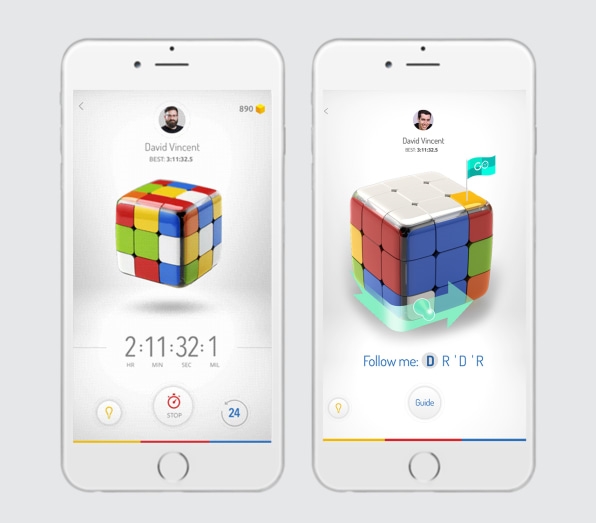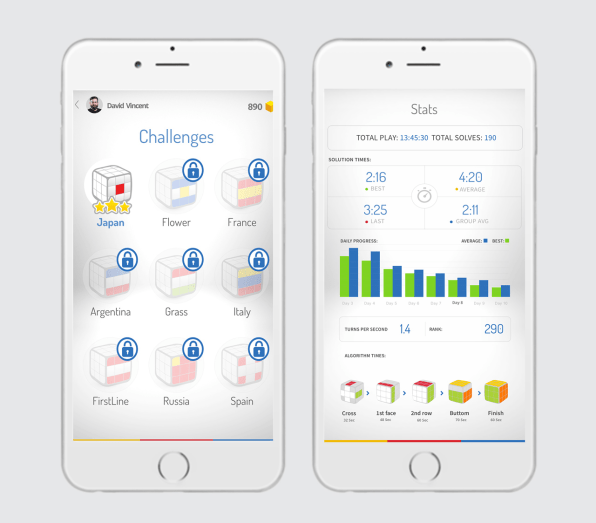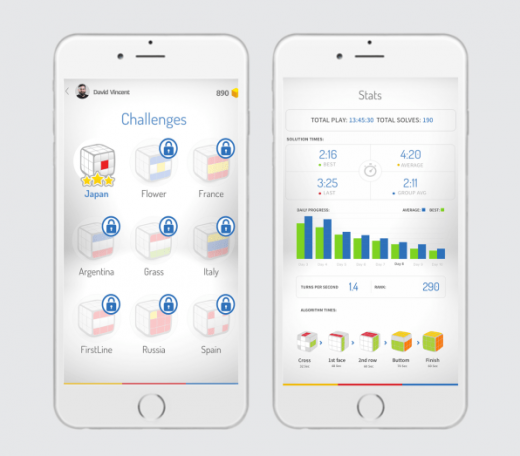The Rubik’s cube, the most popular toy ever, gets redesigned
The Rubik’s cube is widely considered the most popular toy ever made: More than 350 million of them have been sold worldwide since it hit toy shop shelves in Budapest in the 1970s. The toy was invented 1974 by the sculptor and professor of interior design Erno Rubik. It grew into a worldwide phenomenon, with an intensely competitive cuber community that is focused on solving the cube as fast as possible. (The world record is 4.22 seconds.)
Now, an Israel-based startup called Particula is introducing a high-tech version of the classic toy. It has the same essential shape as the Rubik’s Cube, with each of the colorful cube’s six sides divided into nine smaller squares. But unlike the analog original, the so-called GoCube tracks every twist you make. If you’re a proficient cuber already, the cube’s corresponding app will time how fast you can solve it and even set up one-on-one or multiplayer competitions with friends. Even if you’re just a beginner, the GoCube provides simpler games you can play on the cube. The toy has received nearly $800,000 in funding, far more than the $25,000 for which its creators were asking.
For Udi Dor, Particula’s founder and CEO, it wasn’t an obsession with the cube itself that led to the GoCube. Instead, it was an engineering challenge. In May 2016, Dor and his friends were sitting around talking while one of them was playing with a cube. The idea struck them–why couldn’t they all play against each other? Where was the Words with Friends equivalent to the Rubik’s Cube?
Dor felt sure that someone had already built one, but he couldn’t find any available options. He did find a series of patents related to the topic, but, for a whole host of reasons, none had been realized. To create a connected cube, you’d need a sensor to follow the position of each of the 54 small blocks that make up a cube, making it exorbitantly expensive. These sensors can’t be connected by wires, otherwise when you began to play with the cube, “it’s going to become spaghetti in a second,” Dor says. Plus, the cube itself is really small, so it would be a challenge to fit all the electronics inside in such a way that the toy would run efficiently–and with reasonable battery life.

Dor and his team eventually realized that instead of tracking the location of each tiny cube, you could simply track the changes made to each cube if you already knew all of their starting positions. Instead of 54 sensors, you only would need 12–one for turning clockwise and one for turning counterclockwise, for each of the six faces. You could establish the initial state of the cube by taking pictures of it in the app or by starting from an already solved state.
The final GoCube glows with an internal LED that indicates to the player when the cube is connected or when they’re being invited to play a game. All the social components of the GoCube are in the app, which can also show players which steps to take to solve their particular configuration. If you need a little help solving it yourself, the app can provide you instructions on how to get from your current scrambled cube to a solved one. For people who aren’t quite at the level of solving the cube completely, there are other challenges as well, like rearranging the cube so one side looks like the flags of various countries. One game inspired by Guitar Hero shows a tunnel on the phone’s screen, and little squares of light fly toward the player, indicating which part of the cube you’re supposed to twist.

For the hardcore cubers, the GoCube is a way of timing yourself and improving your skill. Because the toy knows all the moves you’ve taken to solve the puzzle, it can also provide an analysis of how well you solved it, making suggestions about more efficient moves and even designing challenges to help cubers get faster. “When you have this kind of Fitbit for cubers, with all kinds of data and information and analysis, we can provide you the exact weak points,” Dor says. “It’s a new way of teaching and practicing.”
Some hardcore fans might not be taken with Particula’s newfangled version of the old-fashioned puzzle. But for those who might prefer the stimulation of a social smart toy, you can order the GoCube on Kickstarter. It’ll come at a price: Despite Dor’s best efforts to keep the cost down, it costs $69 to preorder and $119 in stores. The classic is only $9.99.
Fast Company , Read Full Story
(33)


